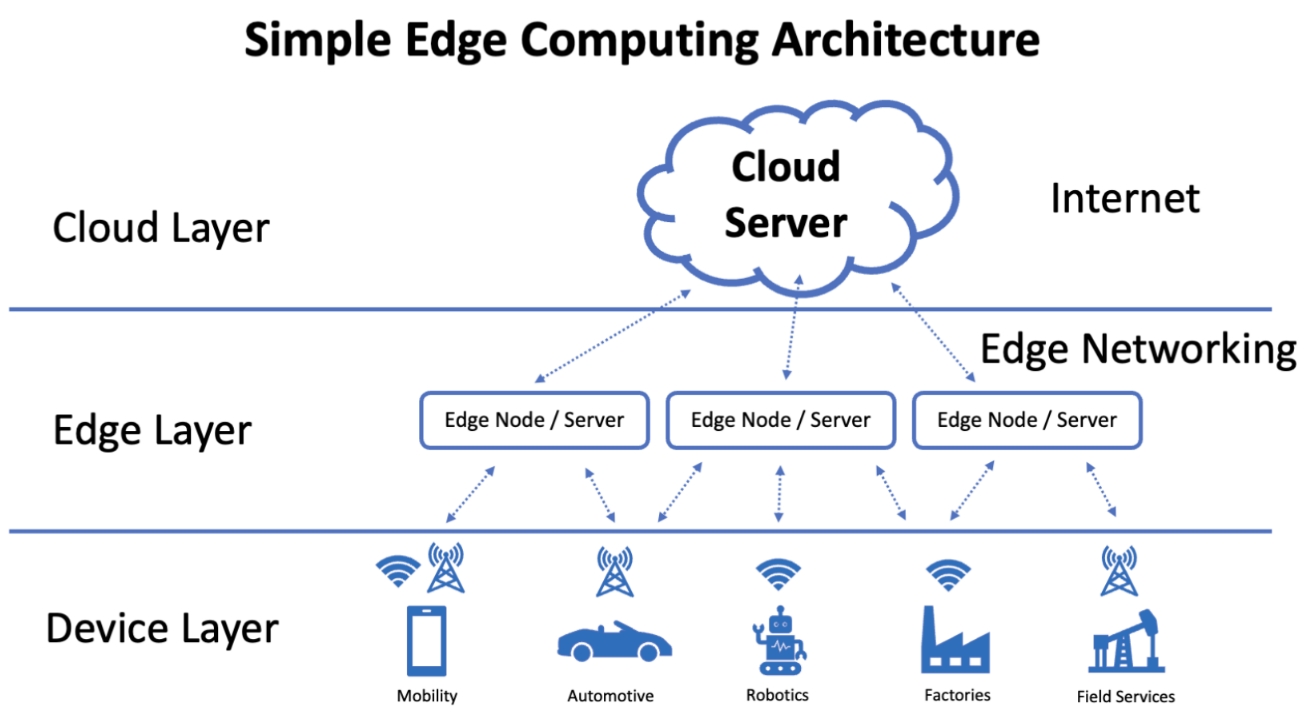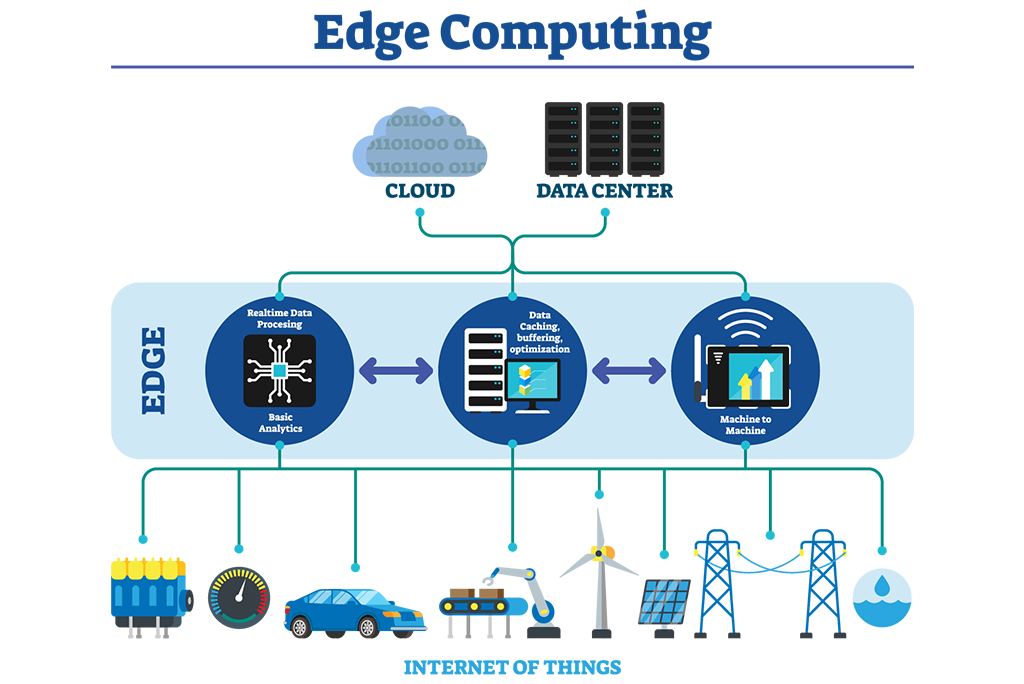Edge computing is transforming the digital landscape. It brings computing power closer to data sources.
In today's fast-paced digital world, speed matters. Edge computing reduces the distance data must travel. This results in faster processing and real-time insights. Imagine a world where your devices respond instantly. From smart homes to autonomous vehicles, edge computing is making this possible.
It enhances efficiency and reduces latency, which is crucial for various applications. As the demand for quick data processing grows, edge computing becomes even more important. Understanding its role can help businesses and individuals stay ahead. Explore how edge computing is shaping our future and why it's becoming a key technology trend. Let's dive into the world of edge computing and its benefits.
Introduction To Edge Computing
Edge computing brings data processing closer to where it is needed. This reduces the time it takes to send and receive data. For example, a smart home device can process data quickly and locally. It does not have to send data far away. This makes the device faster and more efficient. Edge computing helps many devices work better.
Edge computing is very important. It makes devices respond faster. This is crucial for things like self-driving cars. They need to make quick decisions to be safe. Edge computing also helps to reduce network traffic. Less data is sent to faraway servers. This saves bandwidth. It can also improve security. Sensitive data stays local, not in the cloud. This can protect personal information better.

Credit: www.fsp-group.com
How Edge Computing Works
Edge computing processes data close to where it is created. It reduces the need to send data to a central server. This helps in faster data processing. Devices like sensors, cameras, and smart gadgets play a key role. They collect and process data locally. The data is then sent to edge servers or gateways.
These edge servers are closer to the devices. They perform tasks like data filtering and analysis. The processed data can then be sent to the cloud or data center. This architecture helps in reducing latency. It also improves the efficiency of data processing.
Several components are vital for edge computing. These include edge devices, which collect and process data. Edge servers handle more complex tasks. Gateways connect edge devices to the cloud. Network connections ensure smooth data transfer. Finally, security systems protect data at every stage.
Benefits Of Edge Computing
Edge computing brings data closer to the user. This means faster responses. Less delay in getting information. This is crucial for tasks needing quick reactions. Games and real-time apps benefit a lot.
Data stays closer to the user. Less data moves over the internet. This reduces risks of attacks. Sensitive information stays safer. Security breaches are less likely.
Processing data locally saves money. Less data sent to the cloud. Lower bandwidth costs. Edge devices are often cheaper. Running tasks locally cuts expenses.
Edge Computing Vs. Cloud Computing
Edge computing processes data near the source. Cloud computing processes data in remote servers. Edge computing reduces latency. Cloud computing may have more latency. Edge computing is ideal for real-time data. Cloud computing is great for large-scale data storage.
Edge computing is useful in smart cities. It helps with traffic management. It is also used in autonomous vehicles. Cloud computing is perfect for data backup. It supports big data analysis. Many businesses use it for their websites.
Applications Of Edge Computing
Smart cities use edge computing for faster data processing. This helps with traffic management. Data from traffic cameras is processed quickly. This reduces traffic jams. Streetlights are also managed. They use sensors to save energy. Waste management improves too. Smart bins send alerts when full. This keeps the city clean.
Edge computing helps with patient monitoring. Devices track patient health in real-time. Doctors get alerts quickly. This can save lives. Hospitals use it for medical imaging. Images are processed faster. This helps in quick diagnosis. Wearable devices also use edge computing. They keep track of your health. Data is sent to doctors instantly.
Factories use edge computing for machine monitoring. Machines send data about their condition. This helps in predictive maintenance. Problems are fixed before they cause a breakdown. This saves time and money. Quality control also improves. Products are checked in real-time. This ensures high quality. Assembly lines run smoothly.
Challenges In Edge Computing
Handling more devices can be tough. Edge computing systems must grow quickly. If not, they may fail. This can be costly. Planning for growth is very important.
Keeping track of data is hard. Data comes in fast. Organizing it can be a big job. Edge devices must manage data well. Poor management leads to errors. This can impact results.
Strong networks are key. If a network fails, edge computing stops. This can cause big problems. Ensuring network reliability is a must. Backup plans help.
Future Of Edge Computing
Edge computing is growing fast. Devices are smarter. Data is processed locally. This reduces lag. It makes real-time decisions possible. 5G technology plays a big role. It speeds up data transfer. This helps in IoT applications.
Artificial Intelligence (AI) at the edge is common now. Devices learn and adapt. They do this without the cloud. This saves bandwidth. It also increases data privacy. More innovations are on the way. Edge computing will keep evolving.
Many companies are investing in edge computing. The market demand is high. Industries like healthcare and manufacturing benefit a lot. They use edge computing for fast data analysis. This leads to better decision-making.
Smart cities are on the rise. They use edge computing for traffic control. It also helps in energy management. The global market for edge computing is growing. More sectors will adopt this technology. It has a bright future.

Credit: www.wipro.com
Implementing Edge Computing
Plan for security from the start. This protects data and devices. Use encryption for all data. This keeps information safe. Regularly update firmware and software. This fixes bugs and improves security. Monitor network traffic. Detect threats early. Implement redundancy. This ensures system reliability. Choose scalable solutions. They grow with your needs. Ensure low latency. It improves user experience. Train staff on best practices. They can handle issues swiftly. Test systems regularly. This ensures everything works well.
A retail chain used edge computing. Their checkout times improved. They saw faster transaction processing. Another example is a smart city project. They implemented edge solutions. Traffic data was processed locally. This reduced congestion and improved safety. A healthcare provider used edge computing. Patient data was processed at the point of care. This led to faster diagnoses and better treatment. Each case shows real-world benefits. Edge computing makes a big difference.

Credit: innovationatwork.ieee.org
Frequently Asked Questions
What Is Edge Computing?
Edge computing involves processing data closer to its source. It reduces latency and bandwidth usage. This technology is crucial for real-time applications.
How Does Edge Computing Work?
Edge computing processes data locally on devices or nearby servers. It minimizes the need to send data to centralized data centers. This results in faster response times.
Why Is Edge Computing Important?
Edge computing enhances speed and efficiency. It supports real-time analytics and decision-making. This is vital for IoT, autonomous vehicles, and smart cities.
What Are The Benefits Of Edge Computing?
Edge computing offers reduced latency, improved data security, and bandwidth savings. It enhances performance for real-time applications and reduces operational costs.
Conclusion
Edge computing is transforming how we handle data. It brings processing closer to users. This reduces latency and enhances user experience. Businesses benefit from faster decision-making. Security improves with decentralized data processing. Edge computing is essential for modern technology. Embrace it to stay competitive.
As technology evolves, edge computing will play a critical role. Stay informed and adapt to these changes.
.png)
.jpeg)





0 Comments